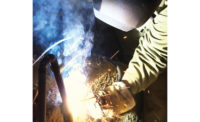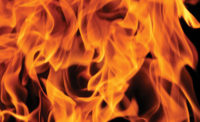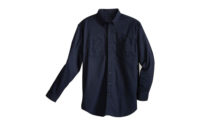Current standards provide a minimum baseline of flame-resistant performance for prospective products. But they do not always provide insight to real-life situations.
Now the focus is on ways to improve the safety of those working in high-risk industries where exposure to high heat, flame and fire is part of the everyday job.
Senior executive Mark Ojile of Clean Uniform Rental in St. Louis notes: “Our customers are no longer satisfied with relying on industry standards that provide the minimums with regards to protection. As they do their own safety analyses they want to understand the science behind fire protections, the impact on worker comfort, and overall value specifics with regards to wearer safety.”
Durability – how is it measured?
Over the years, test methods have been utilized to test the durability of FR products. What has been missing is an accurate assessment of performance in real-world scenarios. These tests fail to answer the question: how will the garment hold up when subjected to a live fire or flame — and/or when used by another individual to assist in getting out of the event itself.
Current test standard
ASTMF1930 is a traditional test standard for durability of an FR garment based on a laboratory flash fire simulation. This test measures the level of predicted human skin burn injury when wearing a single-layer garment or a protective clothing ensemble. A stationary mannequin is dressed in a flash fire coverall and wired with temperature sensors. A series of propane torches are placed around the mannequin to produce a heat flux of 2 cal/sec/cm2. The torches simulate a flash fire event that lasts for three seconds.
Temperature calculations are made to predict the percent of body burn injury. The burn injury to the mannequin’s head, which remains unprotected, is also included in the results. The test takes into account some of the inherent properties of the garment — shrinkage, for example. If the high-heat exposure causes a significant amount of shrinkage to the garment, the increased pressure to the skin will transfer a significant amount of additional heat.
But this test fails to take into account the active motion of a wearer who encounters a fire, such as worker, a soldier or their rescuer. Additional testing is needed to verify the specified product performs in an actual fire emergency.
New test method
The Flame Stress Test is a bench top test that measures what ASTM F1930 does not by simulating real-world elements. A sample of FR fabric is cut and placed under stress. The test itself is designed to simulate fabric pressures that could be encountered during normal bodily movements, such as bending, twisting and stretching.
The force loads on the FR fabric are measured during standard movement events, such as entering or exiting a vehicle. A test process holds a strip of test fabric in tension with a load on the fabric equivalent to the tested pressures. A propane torch applies the same heat flux called for in ASTM F1930 (2 cal/sec/cm2). The objective: how long will the fabric remain intact when placed under combined tension and flame exposure? A fabric performs well if it remains flexible and exhibits structural integrity for a significant duration of time exceeding ASTM F1930’s three-second exposure mark.
Flame stress is important
Analyzed test results concluded a significant flaw exists in the standard ASTM F1930 flash fire-testing scenario. This involves using a stationary mannequin. In the absence of bodily movement, the standard test does not accurately measure true stress levels on the fabric. Attempts over the years to create motion in the mannequin still fail to accurately simulate the normal bodily movements of FR wearers encountering a real fire event.
When an FR wearer encounters a flash fire or similar fire event, rapid involuntary movements occur, followed by voluntary movements, all placing significant stress on the garment. When an FR fabric disintegrates after a little over half of a second of heat exposure — failing to reach the standard ASTM F1930 flame duration of three seconds before they break apart — the result is exposure to the wearer’s bare skin; if an undergarment is worn as a second layer, exposure to a cotton t-shirt quickly catches fire and continues to burn, creating further injury.
Workers deserve the most durable FR protection. Durability is the true measure of an FR garment’s level of quality and performance over time. To view a video of the Flame Stress Test, go to http://gsl-inc.com/video/spentex-video/.



